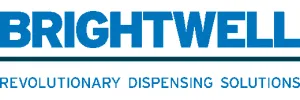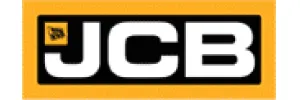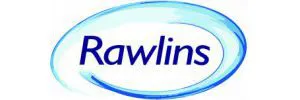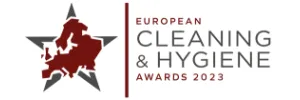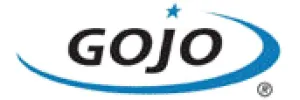News & Insights
Read the latest news from us and our clients across the globe

Posted on 29 June 2015 by adtrak.admin
High Time for Safety
Working at height can be a perilous task, but it doesn’t need to be. Matthew Johnson, managing director of CAM Specialist Support looks at how to minimise risk and promote safe working at height practices.

Whether you’re cleaning and maintaining the windows and high areas of office buildings, shopping centres or sports stadiums, there is no doubt that you need a working at height specialist with the correct equipment, skills and experience.
In short, cleaning the outside of high storey buildings is no job for an odd job man with a ladder and bucket.
These days, as with many other trades, working at height technology has moved on considerably. New, safer and more technically advanced methods of window cleaning and other working at height operations have been developed since the Work at Height Regulations 2005, amended by the Work at Height (Amendment) Regulations 2007, came into force.
One of the key legal requirements of the regulations is for competent people to plan, organise, supervise and carry out work at height. The regulations “apply to all work at height where there is a risk of a fall liable to cause personal injury.”
As CAM’s dedicated Training and Health and Safety Manager Tim Jones explains: “It is a common mistake to separate training from competence. Training is part of the proof of competence, along with knowledge, experience and any other qualities that enable.”
Duty holders need to be assured that when selecting a specialist contractor to carry out cleaning and maintenance at height that their chosen contractor can demonstrate that all staff and managers are competent. Less experienced operatives who need the opportunity to learn new on the job skills must be properly supervised.
The importance of risk assessments and emergency planning
A well planned, active risk assessment is one of the most crucial elements to safety when it comes to cleaning at height. Risk assessment – basically a careful examination of what could cause people harm – should always be carried out to ensure the safest way of working and any rescue plan should be site specific and detailed. RAs are a legal requirement under the Work at Height regulations 2005 – which has made operating at height much safer and more professional.
Even the most well-meaning companies can still leave themselves vulnerable to the risk of accident, injury or prosecution if their risk assessment process is weak, poorly planned or outdated.
By its very nature, a rescue plan is only called upon in an emergency so contractors must carry out regular practice sessions and refresher training to ensure that their operatives will react swiftly and appropriately should an emergency situation arise.
To remain meaningful, RAs must be updated regularly and they must be easy to understand. Danger can arise when companies simply dig out a generic assessment form that they’ve used for years, tick the boxes, change the date and then file it away again. For that reason, here at CAM we recently introduced a visual style of risk assessment across our 800 properties, including a multi-lingual system that reflects an increasingly multi-cultural workforce. Bright graphics, images and the creative use of colour have replaced old style text heavy documents with a simple traffic light system – red, amber and green – used to convey different levels of risk. Our aim is simple: to communicate essential information that can be easily absorbed.
In all sectors but especially the working at height sector, systematically evaluating all aspects of work that could cause harm or injury is of course a vital part of the job. Companies that regularly review and refresh their RAs demonstrate to property owners and managers that they take the identification, evaluation and control of risk seriously.
Technically advanced methods of working at height
Investing in new, forward-thinking equipment is another important consideration when it comes to promoting safety.
One notable improvement in commercial window cleaning in recent years has been the development of water-fed pole systems. Instead of climbing up and down a ladder, and moving a ladder from window to window, operators can stay on the ground with a water tank, and simply move the water-fed pole and its hose to the next set of windows. Carbon fibre poles are also lighter to move than a ladder. Heated systems, which prevent water from freezing in cold conditions, are a relatively new development across the industry but these can be costly and some feel they are not totally effective.
In addition to water fed pole systems, technically advanced suspended access equipment such as cradles, mobile elevated work platforms and rope access enable buildings to be cleaned and maintained more safely
Accredited Training
When it comes to training, there are a number of associations that promote a safe environment for the operation of specialist work at height equipment such as the Industrial Rope Access Trade Association (IRATA), the International Powered Access Federation (IPAF) for powered equipment and PASMA, the lead trade association in Europe for the mobile access tower industry. Duty holders should choose a reputable provider which holds these training accreditations, indicating that it has invested in training and safety. CAM Specialist Support also provides a wide range of training courses to give delegates the knowledge and practical experience to enable them to work safely at height. The courses include IOSH Working Safely and Managing Safely, Mobile Elevated Work Platforms (MEWP) Operator and Demonstrator Courses and IOSH accredited Federation of Window Cleaners courses.
Rather than be daunted by the potential risks involved in cleaning and maintaining buildings whilst working at height, property owners, managers and tenants should be reassured that there are specialist companies, such as CAM Specialist Support, which approach complex building support requirements with expertise, trained, professional staff and a positive attitude.
For more information about commercial and industrial window cleaning, Abseiling, specialist training courses, high-level maintenance, professional and working at height consultancy please contact CAM Specialist Support by telephoning 020 3411 7211 or email info@camsupport.co.uk. See www.camsupport.co.uk for further information.
Published in Tomorrow’s Cleaning – June 2015
Experts in Public Relations Services & Communications Management
Our ServicesGenuine industry specialists in cleaning and hygiene, environmental and recycling, and facilities management
Our Sectors
